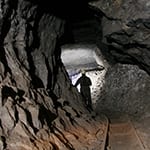IARC assesses whether some nanomaterials and fibres cause cancer
As part of our ongoing surveillance of Canadians exposures to carcinogens, the CAREX team monitors evaluations by the International Agency for Research on Cancer (IARC). In October 2014, IARC gathered 21 experts from 10 countries to evaluate whether a selection of nanomaterials and fibers cause cancer.
The expert team looked specifically at fluoro-edenite, silicon carbide fibres and whiskers, and carbon nanotubes (including single-walled and multi-walled varieties). A summary of their conclusions for each nanomaterial is summarized below.
Silicon carbide:
- Occupational exposures associated with manufacturing silicon carbide particles, called the Acheson process, were classified as carcinogenic (Group 1) based on sufficient evidence that they cause lung cancer in humans.
- Fibrous silicon carbide was classified as possibly carcinogenic (Group 2B) based on limited evidence in humans that it causes lung cancer.
- Silicon carbide whiskers were classified as probably carcinogenic to humans (Group 2A), rather than possibly carcinogenic to humans (Group 2B), because the physical properties of the whiskers resemble those of asbestos fibres, which are known carcinogens.
Virtually all the silicon carbide sold in the world is manufactured. This substance occurs in three forms: particles that are used in industry as an abrasive, fibres that are a by-product of particle manufacturing, and whiskers that are used as durable substitutes for asbestos.
Fluoro-edenite fibres:
- These fibres were classified as carcinogenic (Group 1) based on sufficient evidence that human exposure causes mesothelioma.
Fluoro-edenite is a mineral that can take the form of fibres similar to asbestos. Quarry products from Biancavilla in Italy, used to make unpaved roads in the area since the 1950s, are a source for airborne fluoro-edenite fibres. Exposures have also occurred via indoor air, as a result of the quarry’s products being used in building materials.
Carbon nanotubes:
- A specific nanotube, multi-walled carbon nanotube-7 was classified as possibly carcinogenic(Group 2B) based on evidence showing that they caused mesotheliomas in male and female rats.
- All other multi-walled and single-walled carbon nanotubes were categorised as not classifiable as to their carcinogenicity to humans (Group 3) due to insufficient evidence.
Carbon nanotubes consist of either a single cylinder of carbon (single-walled), with an outer diameter of 1–3 nm, or of multiple carbon cylinders arranged in layers (multi-walled) with diameters of 10–200 nm. The characteristics of carbon nanotubes vary depending on how they’re produced. They can be used to improve the structural integrity of fabrics, plastics, rubbers, electronics (i.e. in transistors and solar cells), and structural materials, as well as in medicine (i.e. drug delivery and bone tissue engineering). More information can be found on our carbon nanotubes profile.
The full IARC Monograph Volume 111: Some Nanomaterials and Some Fibres is available here.
Subscribe to our newsletters
The CAREX Canada team offers two regular newsletters: the biannual e-Bulletin summarizing information on upcoming webinars, new publications, and updates to estimates and tools; and the monthly Carcinogens in the News, a digest of media articles, government reports, and academic literature related to the carcinogens we’ve classified as important for surveillance in Canada. Sign up for one or both of these newsletters below.
CAREX Canada
School of Population and Public Health
University of British Columbia
Vancouver Campus
370A - 2206 East Mall
Vancouver, BC V6T 1Z3
CANADA
As a national organization, our work extends across borders into many Indigenous lands throughout Canada. We gratefully acknowledge that our host institution, the University of British Columbia Point Grey campus, is located on the traditional, ancestral and unceded territories of the xʷməθkʷəy̓əm (Musqueam) people.



 Thanks to a collaborative effort with scientists from the Occupational Cancer Research Centre, our occupational exposures team was able to estimate the levels of exposure to diesel engine exhaust in Canadian workplaces. Results show the majority of workers exposed to diesel exhaust are in the low exposure category, with a significant number at risk for moderate to high exposure.
Thanks to a collaborative effort with scientists from the Occupational Cancer Research Centre, our occupational exposures team was able to estimate the levels of exposure to diesel engine exhaust in Canadian workplaces. Results show the majority of workers exposed to diesel exhaust are in the low exposure category, with a significant number at risk for moderate to high exposure.